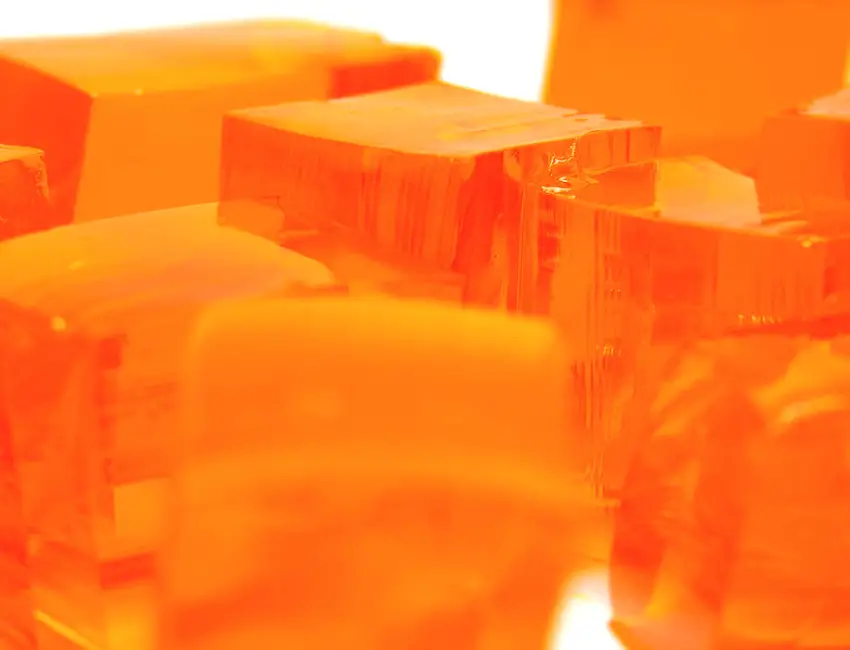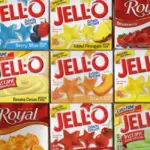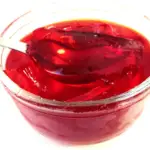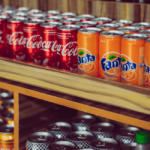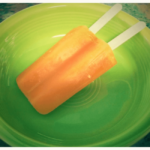It’s no secret that U.S. food manufacturers commonly use dyes to make their products more appealing. How a food appears can influence taste and how we perceive the food.
If a chocolate ice cream were colored red, for example, the perceived taste would be impacted for many people. This is because we typically associated red with fruity, sweet, and sour flavors which are much different from the taste of chocolate.
Below you will learn if Orange Jell-O is one of the many store-bought products with added dyes. At the end of the article, you will find a list of Jell-O products and the dyes used in them. Here are the details!
Orange Jell-O & Red Dye
When it comes to Orange Jell-O, its colors are not natural. Kraft Heinz, the manufacturer, adds coloring to give it its vibrant orange color.
The dyes used are Yellow 6 and Red 40. These dyes are in both regular and sugar-free varieties of this Jell-O.
The ingredients below confirm that Orange Jell-O has yellow and red dyes:
Orange Jell-O Ingredients: Sugar, Gelatin, Adipic Acid, Contains Less Than 2% Of Sodium Citrate, Disodium Phosphate, Fumaric Acid, Natural And Artificial Flavor, Yellow 6, Red 40.
Sugar-Free Orange Jell-O Ingredients: Gelatin, Adipic Acid (For Tartness), Disodium Phosphate (Controls Acidity), Maltodextrin (From Corn), Fumaric Acid (For Tartness), Aspartame (Sweetener), Contains Less Than 2% Of Natural And Artificial Flavor, Acesulfame Potassium (Sweetener), Salt, Yellow 6, Red 40, BHA (Preservative).
Jell-O Products & Dyes
The table below reflects the various flavors of Jell-O Gelatin products and the type of dyes used in each. Many of these gelatins contain red dye but there are a few options without it if you wish to avoid it. Keep in mind that all Jell-O products listed have some type of dye.
| Jell-O Product | Dye Used |
|---|---|
| Orange | Red 40, Yellow 6 |
| Raspberry | Red 40 |
| Strawberry | Red 40 |
| Strawberry Banana | Red 40 |
| Strawberry Kiwi | Red 40 |
| Cherry | Red 40, Blue 1 |
| Black Cherry | Red 40, Blue 1 |
| Watermelon | Red 40 |
| Island Pineapple | Yellow 5, Yellow 6 |
| Berry Blue | Blue 1 |
| Blackberry Fusion | Red 40, Blue 1 |
| Lemon | Yellow 5, Yellow 6 |
| Lime | Blue 1, Yellow 5 |
| Mango | Yellow 5, Yellow 6 |
| Apricot | Yellow 6 |
| Peach | Red 40, Yellow 6, Blue 1 |
| Grape | Red 40, Blue 2 |
| Cranberry | Red 40, Blue 1 |
Is Red 40 Safe?
The U.S. Food and Drug Administration (FDA) and the European Food and Safety Authority (EFSA) have determined red 40 to be safe for people to consume. It is made from a synthetic chemical compound called Allura red AC, sodium chloride, and sodium sulfate.
According to WebMD.com, some people believe that red 40 and other dyes increase the symptoms of attention deficit hyper activity disorder (ADHD). However, convincing evidence is not yet there for the FDA to step in. Additional research needs to be conducted.
Sources:
Jello.com
Wood, C. (2021, February 8). How does colour affect taste and the way we eat? How Does Colour Affect Taste and the Way We Eat? Retrieved December 9, 2022, from https://www.foodunfolded.com/article/how-does-colour-affect-the-way-we-eat
Anderson, A. (n.d.). What is Red No. 40? WebMD. Retrieved December 9, 2022, from https://www.webmd.com/diet/what-is-red 40#:~:text=pens%2C%20and%20markers.-,Is%20Red%2040%20Safe%3F,dye%20as%20recently%20as%202019.
Image credit – Matt Reinbold/flickr

